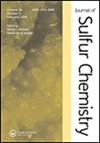Microwave-assisted synthesis of electrode materials for LIBs: MoS2/rGO heterostructures
Abstract
The incomplete reduction of graphene oxide (GO) yields reduced graphene oxide (rGO), characterized by a zero band gap and intrinsic layer stacking, thus constraining its practical utility across diverse domains. Fortunately, this challenge can be effectively addressed by employing a suitable substrate for the fabrication of MoS2/rGO heterostructures. Nanocomposites of MoS2/reduced graphene oxide (MoS2/rGO-700W and MoS2/rGO-560W) were synthesized using MoS2 and GO solutions as starting materials through microwave-assisted synthesis with microwave power treatments of 700W and 560W, respectively. Structural characterization results reveal that the particle size of MoS2 within the composites is notably smaller compared to that of pure MoS2. The MoS2/rGO-700W composite demonstrates a more homogeneous dispersion of MoS2 and features a well-developed hierarchical porous structure with increased pore volume and specific surface area. The MoS2/rGO-700W composite demonstrates elevated ID/IG ratio, C/O ratio and C = C peak area, suggesting that increased microwave power enhances the removal of oxygen-containing groups from rGO. This process significantly restores the extended conjugated structure of graphene, thereby offering enhanced conductivity at the MoS2 interface. Furthermore, the proposed strategy holds considerable theoretical value and provides significant insights for the development process of novel MoS2-based composite electrode materials.

 求助内容:
求助内容: 应助结果提醒方式:
应助结果提醒方式:


